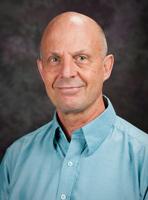Itzik Ben-Itzhak
 University Distinguished Professor
University Distinguished Professor
331 Cardwell Hall
itzik@k-state.edu
Group Webpage
Ph.D. The Technion, Haifa, Israel, 1986
Research Area
Experimental Atomic, Molecular & Optical Physics
The focus of our research is the interaction of intense ultrashort laser pulses with molecular ions. The molecular ion beams, at a few keV, originating from an ion source (ECR), are crossed by the Kansas Light Source (KLS) laser beam. The resulting fragments are measured in coincidence by a 3-dimensional momentum imaging system, which allows for direct separation of the ionization and dissociation channels. These measurements provide the complete angular distribution of the molecular breakup around the laser polarization vector as well as the kinetic energy release (KER) upon dissociation with sufficient resolution to identify the vibrational states of H2 +. During this year we have modified the experimental setup and imaging technique to allow measurements of dissociation with zero kinetic energy release (KER→0). Taking advantage of the improved energy resolution and extended energy range we explored the dissociation of H2 +in intense ultrashort laser pulses.
In one example, the improved energy resolution allowed us to provide experimental evidence for the reduction in dissociation probability of the v=12 vibrational state that has been predicted by Esry's group. This suppressed dissociation was attributed in the past to vibrational trapping in the light induced potential well. However, the present calculations including nuclear rotation indicate that there is no vibrational trapping. The observed suppression in H2 +dissociation is caused by the small magnitude of the transition dipole moments and not by vibrational trapping, as has been commonly believed.
In another example, the ability to measure H2 + dissociation with zero KER provided clear experimental evidence for zero photon dissociation (ZPD) – namely dissociation with net absorption of zero photons. Also in this case, vibrational trapping has been a key ingredient of the mechanism suggested in the past to explain ZPD, but the theoretical work of Esry's group suggests that there is no vibrational trapping. The alternative mechanism we suggest to explain ZPD involves the absorption of a slightly more energetic photon followed by the stimulated emission of a less energetic photon, both photons within the spectral bandwidth of the laser pulse – that is a Raman scattering process.
Research Support
- Department of Energy
- National Science Foundation
- US-Israel Binational Science Foundation
Graduate Advisee
- Naoki Iwaomoto, PhD
Recent Selected Publications
“Enhancing high-order harmonic generation by controlling the diffusion of the electron wavepacket”, T. Severt, Jan Tross, G. Kolliopoulos, I. Ben-Itzhak, and C.A. Trallero-Herrero, Optica 8,1113 (2021). [link]
“Dependence on initial configuration of strong field-driven isomerization of C2H2 cations and anions”, Bethany Jochim, Ben Berry, T. Severt, Peyman Feizollah, M. Zohrabi, Kanaka Raju P., E. Wells, K.D. Carnes, and I. Ben-Itzhak, J. Phys. Chem. Lett. 10, 2320 (2019). [link]
“H2 roaming chemistry and the formation of H3 + from organic molecules in strong laser fields”, Nagitha Ekanayake, Travis Severt, Muath Nairat, Nicholas P. Weingartz, Benjamin M. Farris, Balram Kaderiya, Peyman Feizollah, Bethany Jochim, Farzaneh Ziaee, Kurtis Borne, Kanaka Raju P., Kevin D. Carnes, Daniel Rolles, Artem Rudenko, Benjamin G. Levine, James E. Jackson, Itzik Ben-Itzhak, and Marcos Dantus, Nature Communications 9, 5186 (2018). [link]
“Native frames: Disentangling sequential from concerted three-body fragmentation”, Jyoti Rajput, Travis Severt, Ben Berry, Bethany Jochim, Peyman Feizollah, Balram Kaderiya, M. Zohrabi, U. Ablikim, Farzaneh Ziaee, Kanaka-Raju P., D. Rolles, A. Rudenko, K.D. Carnes, B.D. Esry, and I. Ben-Itzhak, Phys. Rev. Lett. 120, 103001 (2018). [link]
Highlighted in Physics Today – online story: Three-body fragmentation in a new frame by Johanna L. Miller [link]
“Carrier-envelope phase control over pathway interference in strong-field dissociation of H2 + ”, Nora G. Kling, K.J. Betsch, M. Zohrabi, S. Zeng, F. Anis, U. Ablikim, Bethany Jochim, Z. Wang, M. Kübel, M.F. Kling, K.D. Carnes, B.D. Esry, and I. Ben-Itzhak, Phys. Rev. Lett. 111, 163004 (2013). [link]